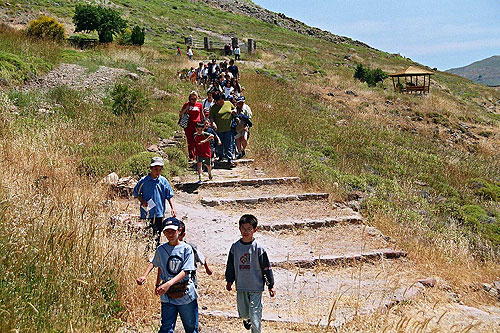

Each year the Museum invites all students and teachers to get to know and to participate in educational programs...
…to travel 20 million years into the geological past of the Aegean and to encounter phenomena and processes which can not be directly observed.
…to get to know the petrified forest and the plants that lived in the region of the Aegean millions of years ago, and to compare them with those of the modern ecosystems of Lesvos.
…to try to uncover step by step all the activities and changes that have contributed to the creation of the current landscapes of Lesvos.
…to learn about the geological history of the Aegean and the most important volcanoes of Lesvos, and also to experiment with the creation of a volcanic explosion.
Besides, who would not want the unique experience of getting to know a 20 million year old fossilized tropical forest or walking into the heart of a volcanic crater!!
The educational programs for school teams are geared towards particular age groups:
Α. children 4 - 7 years old (Kindergarten to year 1)
Β. children 8 - 12 years old (3rd - 6th year)
C. children 13 - 17 years old (High school - Lyceum)
The educational programs of the Museum aim at bringing children into contact with the subjects of natural history, the permanent and temporary exhibits, to tweak their imagination and their interest in the planet, the history of the development of life, the importance of geotopes, the natural processes, the protection of ecosystems, and the modern environmental problems, by allowing them to express themselves creatively in the space of the Museum.
Depending on the theme, the educational programs include a tour through the exhibitions halls, the laboratories and in the parks. The tour encourages the active participation of the children in their observations and discussions on the exhibits. The visual and aesthetic stimuli that engage the children at the briefing carry over into educational activities such as their own pictures and crafts through games with different materials.
With the completion of each program, each student takes home a specifically designed booklet, which he/she can process alone or with the remainder of the team at school.